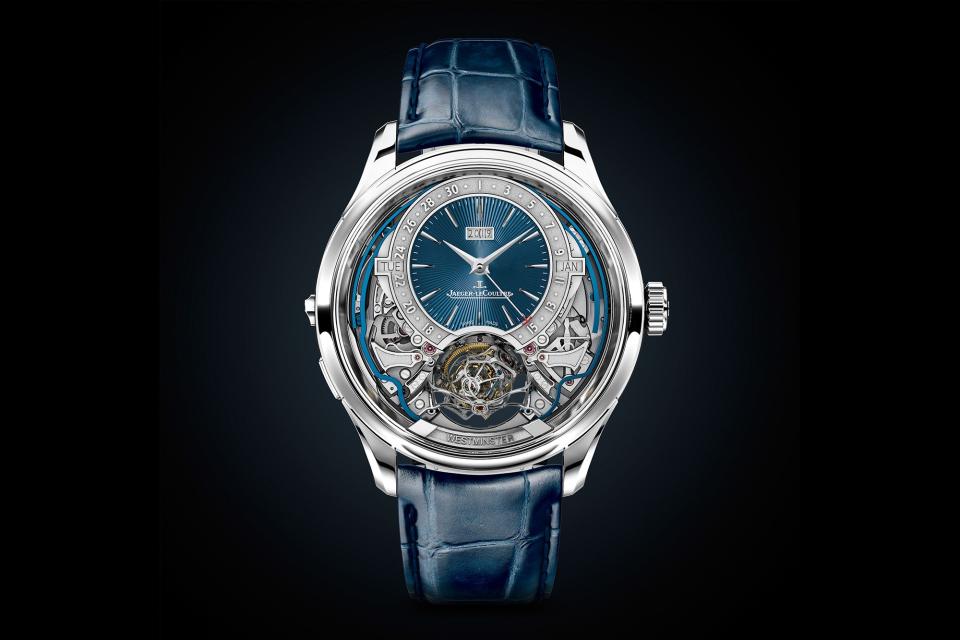A Tourbillon Ups the Value of a Watch Exponentially. So What Is It?
Reading about watches can often feel like cracking open a textbook. Those trying to understand what they’re looking at—or maybe even considering buying—are immediately barraged with inscrutable words and phrases like ”tourbillons,” “perpetual calendars,” “minute repeaters,” and so on. So here, we'll be breaking down the meaning, history, and importance of different watch terms. Welcome to GQ's Watch Glossary.
Even if you don’t know much about watches, you might know what a tourbillon does to one: it adds a couple extra zeros to a timepiece's value. Last year, Tag Heuer made headlines when it unveiled an “affordable” tourbillon watch. The piece cost $20,000. The tourbillon was once a breakthrough in watchmaking, but today, like spinners on a Hummer, is more useful for showing off.
How did we get here? The tourbillon was invented by watchmaker Abraham-Louis Breguet around 1795, during the era of the pocket watch. Unlike the modern wristwatch, a pocket watch typically remained in two positions: vertical in a pocket or horizontal on a table. Breguet discovered that gravity pulled on the time-telling mechanisms in the watch (the balance wheel and hairspring, originally a coil of steel or gold that swung like a pendulum and kept time) and created imperfections.
In his fight against gravity, Breguet created a cage that could hold all the pieces necessary for keeping time. He made it so that cage rotated in a circle, effectively preventing gravity from yanking the spring too far in one direction. Now, it’s an incredibly complicated mechanism made up of roughly 70 different parts that live inside the diameter almost half that of a dime. The whole thing is typically placed right on the dial, where the rotating gears can easily be called on to impress whoever’s looking at a timepiece.
But the tourbillon didn’t truly catch on until about two centuries after its invention. Watches powered by quartz were invented in the 1980s—they were much more accurate, and powered by batteries that kept ticking without interruption much longer than any mechanical watch. “All of a sudden all the mechanical movements became much less precise than the quartz,” said Stephane Belmont, Jaeger-LeCoultre’s director of heritage. (The movement is the heart of the watch, the series of pieces that keep it ticking.) Plus, wristwatches strapped onto flailing arms didn’t have the same problems with gravity as their pocket-bound predecessors. So, in response to the so-called “Quartz Crisis,” watchmakers started relying on beauty, more than precision, to sell their watches.
“To wear a watch with a tourbillon was a sign that you would wear a very high-level watch and that you have something quite special,” Belmont said. “That's how actually it became much more attractive and much more popular. People knew if you had a tourbillon on the wrist it means you have a mechanical watch.”

Wearers weren’t the only who used the tourbillon to show off. Watchmakers, too, used the tourbillon as an excuse to flaunt their skill and ability to assemble dozens of parts inside a tiny space. Jaeger-LeCoultre, for example, upped the ante on a tourbillon that rotated on a single axis with the gyrotourbillon, which rotates around like a globe.
Luckily for modern watchmakers, Breguet’s invention wasn’t just practical in its time—but mesmerizing over 220 years later. Today, quartz isn’t even the greatest threat to mechanical watches. Most people now carry a device around in their pockets that knows the exact time, down to the second. The tourbillon’s greatest advantage isn’t that it keeps time well, but that it does so beautifully.
Watch:

